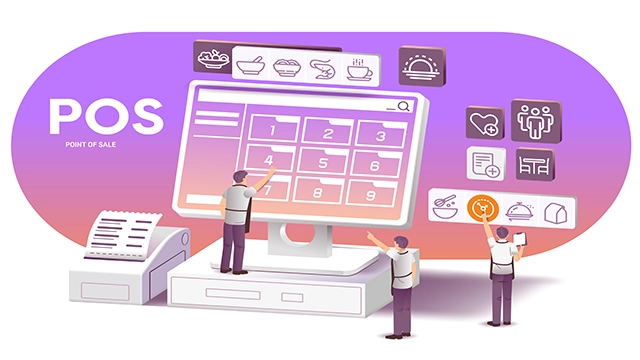5 Common Point-of-Sale Financing Mistakes For Retailers to Avoid in 2025
Point-of-sale (POS) financing has become a strategic priority for retailers looking to boost customer satisfaction and increase sales. However, there are common mistakes that can hinder success. In this article we explore how to avoid these pitfalls and maximize the benefits of POS financing.

Shoppers today demand choice, personalization, and convenience in every aspect of their retail experience—yet many merchants fall short when it comes to point-of-sale (POS) financing. A recent survey by ChargeAfter highlighted that despite the integral role that POS financing plays in generating sales revenue, only 1% of merchants agree that they meet the needs of all of their customers. Recognizing the strategic importance of POS financing, 78% of merchants say that point-of-sale financing is a strategic priority for 2025.
The current state of POS financing presents an exciting opportunity for retailers to differentiate themselves. By addressing common pitfalls and implementing smarter, more customer-centric financing strategies, merchants can not only boost approval rates and sales but also build stronger, long-term customer loyalty.
Let’s explore the 5 most common mistakes retailers make with POS financing and how to avoid them.
The 5 Most Common POS Financing Mistakes Retailers Make
- Working with a single lender
- Ignoring the omnichannel experience
- Providing a fragmented customer experience
- Overlooking the value of financing data to build customer loyalty
- Adding additional lenders without using a platform
Mistake 1: Working With A Single Lender
To cater to their diverse customer base and offer the most favorable lending options, retailers must collaborate with multiple lenders catering to various credit profiles. Lenders typically specialize in specific customer segments, such as prime, near-prime, or subprime, and specific loan products like buy now pay later (BNPL), 0% APR, short/long-term installments, lease-to-own, etc. Additionally, geographical coverage is another aspect, as lenders typically only serve one region.
When a retailer relies solely on a single lender, it poses challenges. For instance, if a shopper is declined for a loan at the checkout stage, they have limited alternatives and are likely to abandon their shopping cart. This results in a lost sale and customer, as they might be deterred from future purchases. Moreover, if the lender with whom the retailer exclusively works changes their terms or ceases operations, they find themselves in a difficult situation without alternative lending options.
Research by Snap Finance published in Yahoo finance in March 2024 reveals that almost 50% of consumers with credit challenges will avoid purchasing from stores that do not supply them with financing options.
Mistake 2: Ignoring the Omnichannel Experience
It’s often said that one should never put all their eggs in one basket, and this is especially true when it comes to the sales experience. Customers are, in the end, individuals with different preferences when making purchases. It is important to offer a consistent experience regardless of how the consumer engages with your business.
Whether your customers are using an app, website, or physical store, they should enjoy a consistent experience, including when it comes to point-of-sale financing, regardless of how they choose to access your services. Shoppers who rely on financing to make a big-ticket purchase, for example buying furniture, will likely prefer to apply for financing online from home before heading to the store with their pre-approval to complete their purchase. This translates into other purchases that customers know they can’t access without financing and where they want to avoid the embarrassment of in-store declines.
To provide a seamless omnichannel experience, it is equally essential to strategically offer point-of-sale financing options across various customer interaction points, not merely at checkout. In-store, this can include QR codes that are displayed throughout the store where customers can apply in advance on their mobile devices, as well as at self-checkout, or at traditional checkouts.
Mistake 3: Providing a fragmented customer experience
While an omnichannel financing experience is critical, it isn’t the only barrier to a fragmented customer journey. When retailers fail to establish a streamlined process for loan applications and approvals, especially when integrating more than one lender into their offer, the result is a frustrating experience for customers.
Consider a shopper applying for a loan at the point of sale, which gets declined. If the retailer offers more than one lending option, the customer who wants to continue looking for a loan has to start the application process all over again with a different lender. This repetition not only adds unnecessary inconvenience and time consumption for the customer but also creates a sense of frustration and confusion.
This poor experience leads to customer dissatisfaction, a loss of trust in the retailer, and potential purchase abandonment. Retailers should prioritize integrating their financing options into a single platform to establish a cohesive process that ensures a seamless customer experience, minimizing the need for multiple loan applications and reducing the likelihood of customer frustration and disengagement.
Jerome’s Furniture, a discount furniture chain store in Southern California, achieved a 67% increase in consumer financing adoption with high approval rates by embracing consumer financing as part of the customer journey with ChargesAfter’s embedded lending platform.
Mistake 4: Overlooking the value of financing data to build customer loyalty
Data about customer financing is an invaluable asset that can help retailers make informed decisions across various aspects of their operations. By harnessing insights derived from customer financing data, retailers can enhance their marketing strategies, identify upselling opportunities, and optimize their lenders.
Customer financing data provides a comprehensive understanding of customer purchasing behavior and preferences. By analyzing this data, retailers gain insights into which products are most commonly financed, the preferred financing options, and the specific factors influencing customers’ decisions. With this knowledge, retailers can tailor their marketing strategies to target the right audience, showcase relevant products, and optimize promotional campaigns to resonate with customers’ financing preferences.
Access to individual shoppers financing data is a powerful way for retailers to build personalized customer relationships and highlights upselling opportunities. By analyzing shoppers purchasing patterns and financing histories, retailers can identify customers who have previously financed products and can invest in higher-priced items. With this information, retailers can personalize their sales approach, offer attractive financing options, and guide customers toward upgrading their purchases. This boosts revenue and enhances customer satisfaction by providing tailored recommendations based on their financial capabilities.
Moreover, retailers can leverage financing data to collaborate with lenders and optimize partnerships that provide their customers with the most successful financing options.
Mistake 5: Adding additional Lenders without using a platform
Adding additional lenders without using a point-of-sale (POS) platform contributes to a poor customer experience and makes managing post-sale processes such as refunds, reconciliations, and disputes exceptionally complicated. Without a centralized system, each lender operates independently, making it difficult to streamline and coordinate these critical activities.
Without an embedded lending platform, managing post-sales transactions becomes a cumbersome process. Each lender may have different refund policies, procedures, and timelines, making it hard to ensure consistent and efficient processing. Reconciling transactions across multiple lenders becomes equally complex, as there is no centralized mechanism to track and match payments, leading to potential errors and discrepancies.
Handling disputes becomes a more arduous task as well. Without a unified platform, resolving issues requires interacting with each lender separately, prolonging the resolution process and causing frustration for customers and retailers. The lack of streamlined communication channels and standardized dispute-resolution procedures can result in inconsistent outcomes and an unsatisfactory customer experience.
Additionally, compliance becomes more complicated without a platform. Each lender may have its own regulatory requirements, and managing and ensuring adherence to these varied compliance standards can be daunting. This increases the risk of non-compliance and potential legal issues for lenders and merchants.
Conclusion – A platform-first solution
Retailers are increasingly partnering with ChargeAfter to simplify their financing operations and eliminate the common pitfalls of point-of-sale financing. By embedding multiple lenders into a single, easy-to-manage platform, ChargeAfter enables merchants to deliver a seamless and efficient financing waterfall experience for their customers. With this approach retailers can achieve approval rates of up to 85%, meeting the needs of shoppers across the credit spectrum.
Beyond customer benefits, the platform simplifies post-sale processes by consolidating lender relationships, streamlining workflows, and reducing administrative burdens.

About Kevin Lawrence
VP Global Lender Relations – Kevin has worked in the banking and finance industry for over a decade. He has worked closely with some of North America’s largest banks, financial institutions, and retailers. Kevin is an expert in embedded consumer financing and B2B financing. He has a deep understanding of current trends and where the industry is heading.
